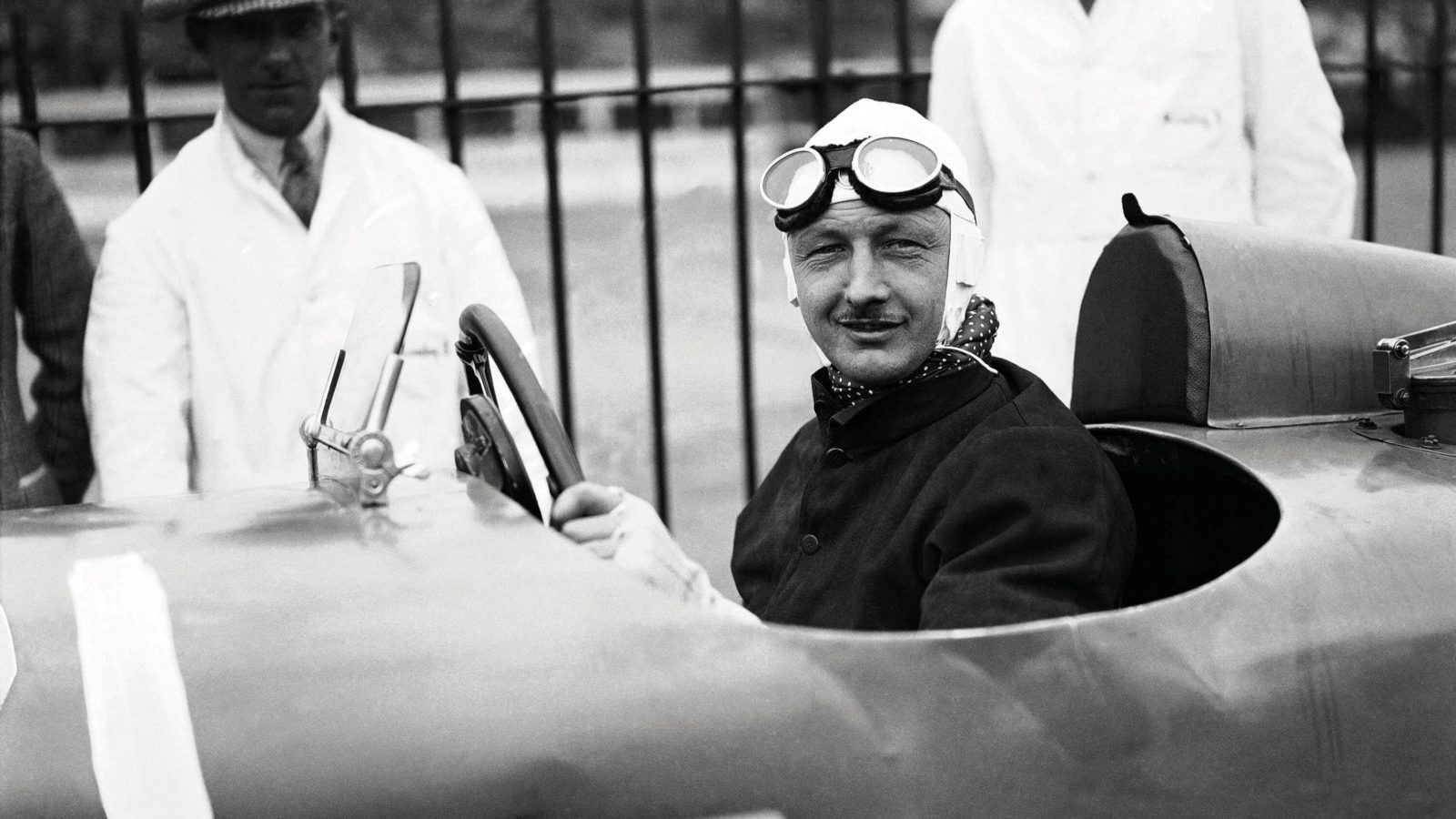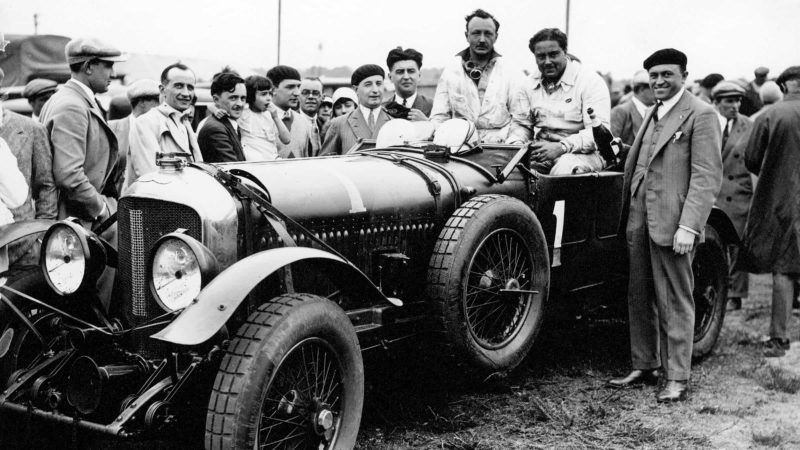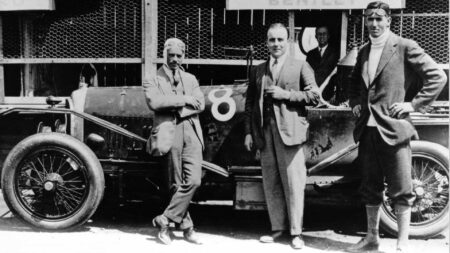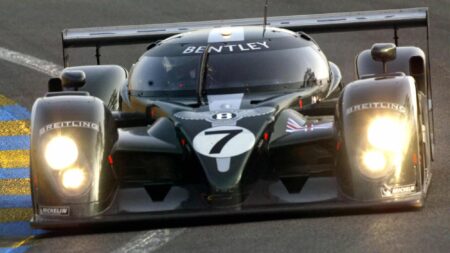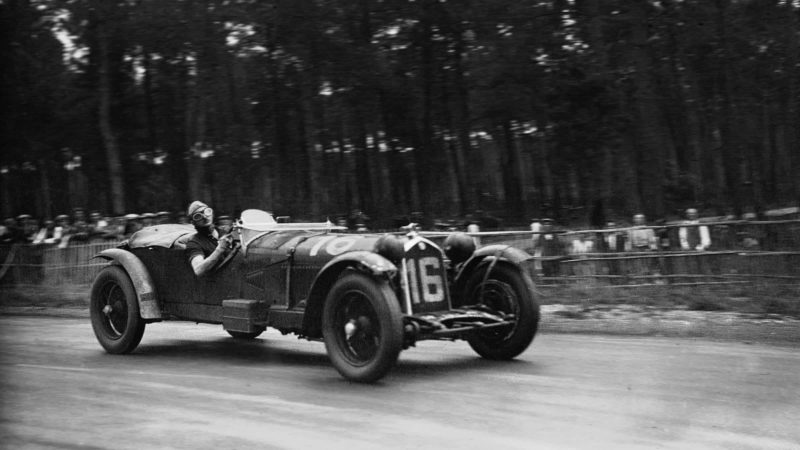“He said to me, ‘They want me to write my life, and Syrie tells me you want to be a writer. Why don’t you write it?’ I wasn’t particularly interested in cars, but I jumped at it. He didn’t care a damn that I’d never written anything. It was rather marvellous; it gave me an excuse not to go back to Oxford, as I was having a good time and hadn’t done a stroke of work.
“We worked on it at my parents’ house in Hyde Park Square. Tim would come there every day and stride up and down dictating. I’m sure we did it in three weeks, because Mr Marshall of Foulis [the publishers] said, ‘You can’t do it in that time’, and because we were both keen on a challenge we decided that of course we must! We started in September and Tim was determined to have it out by Christmas. I don’t know how l coped, knowing nothing on the subject; I can’t remember looking at any reference books. I had heard of Tim, just, but I’d never heard of Rudi Caracciola, Campari or Chiron.
“I had to decide whether I was writing for experts or the public, and I immediately dismissed experts — I wouldn’t have been capable of that. I just asked him questions. I never remember him being at all impatient with me for not knowing anything about racing. The book was simply about Tim’s character and his stories, and the whole thing was a great joy. I’m rather proud that it didn’t strike a phoney note and didn’t seem obviously ghosted. When I read it now I think it’s quite well-written.
“The title Full Throttle was my idea, I think; or perhaps we hit on it jointly. He had thought of one or two — one was Racing Demon. The dedication [which reads ‘To all schoolboys’] must have been him. He was a tremendous hero to schoolboys, like David Beckham is today — but not so organised.
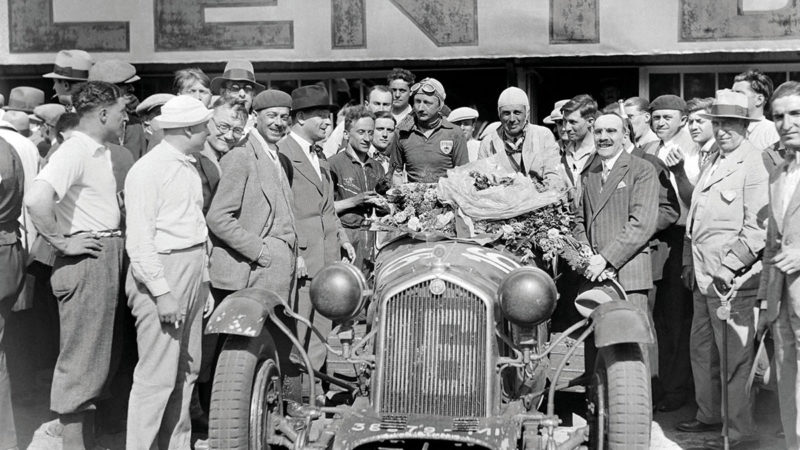
The 1931 Le Mans victory of Tim Birkin and Lord Howe was the first of four for the legendary 2.3
Gamma-Keystone via Getty Images
“I don’t know how we did it in the time, except that we were determined to. And it did awfully well. Tim and the publishers were very pleased. I had a tiny slice of the profits, but it made up for me not going back to Oxford. I hope Birkin made a lot of money from it, but I’m sure he spent it all at once. He liked champagne…
“I didn’t meet the other Bentley boys. I had an interview with Malcolm Campbell, whom Tim didn’t like, though he’s pleasant enough about him in the book. He was awfully polite about people; not a malicious person at all, but I think he thought Campbell was a bit of an advertiser. Tim’s hero was Sir Henry Segrave. He admired him enormously, and talks about him in the book as some sort of an ideal. He also admired his German rivals very much, Caracciola especially.
